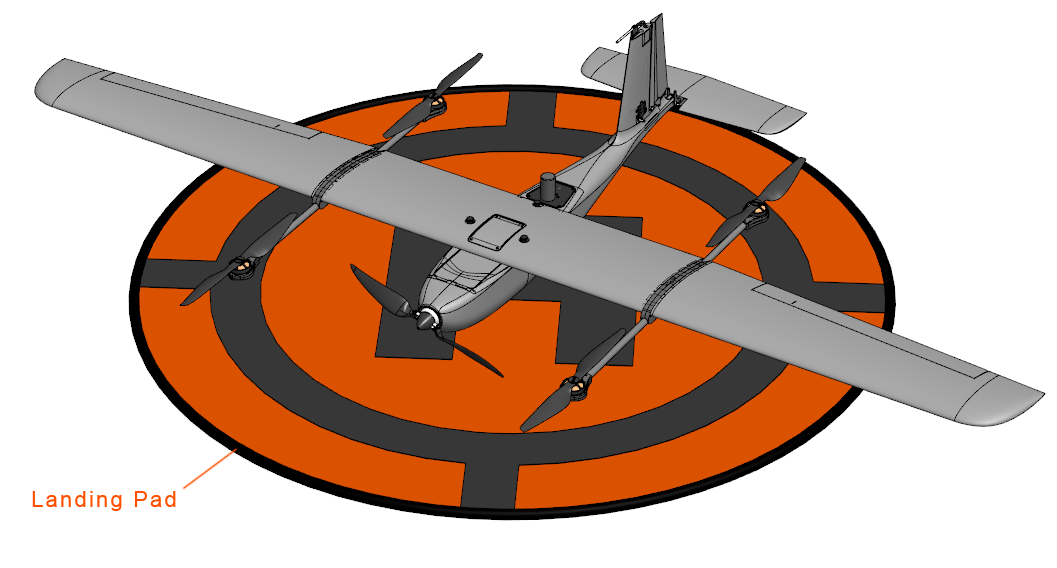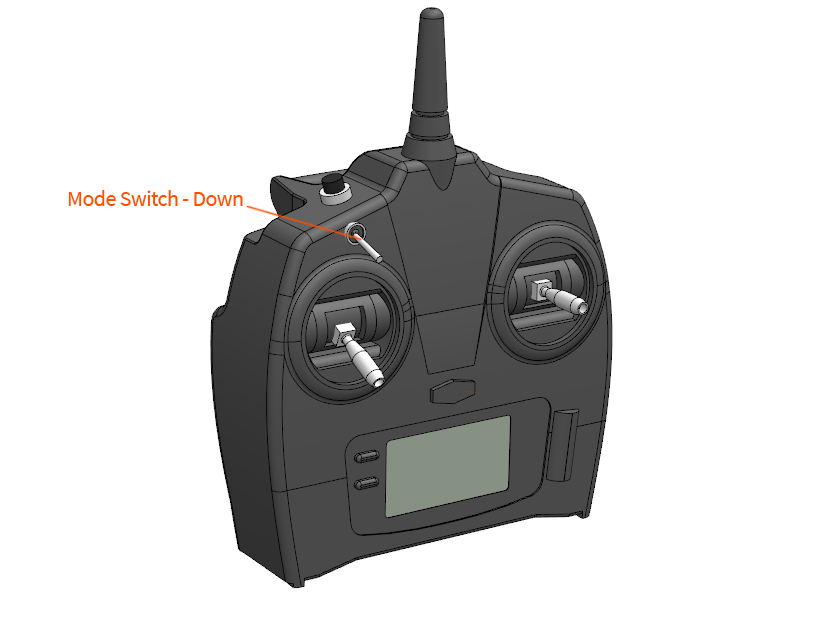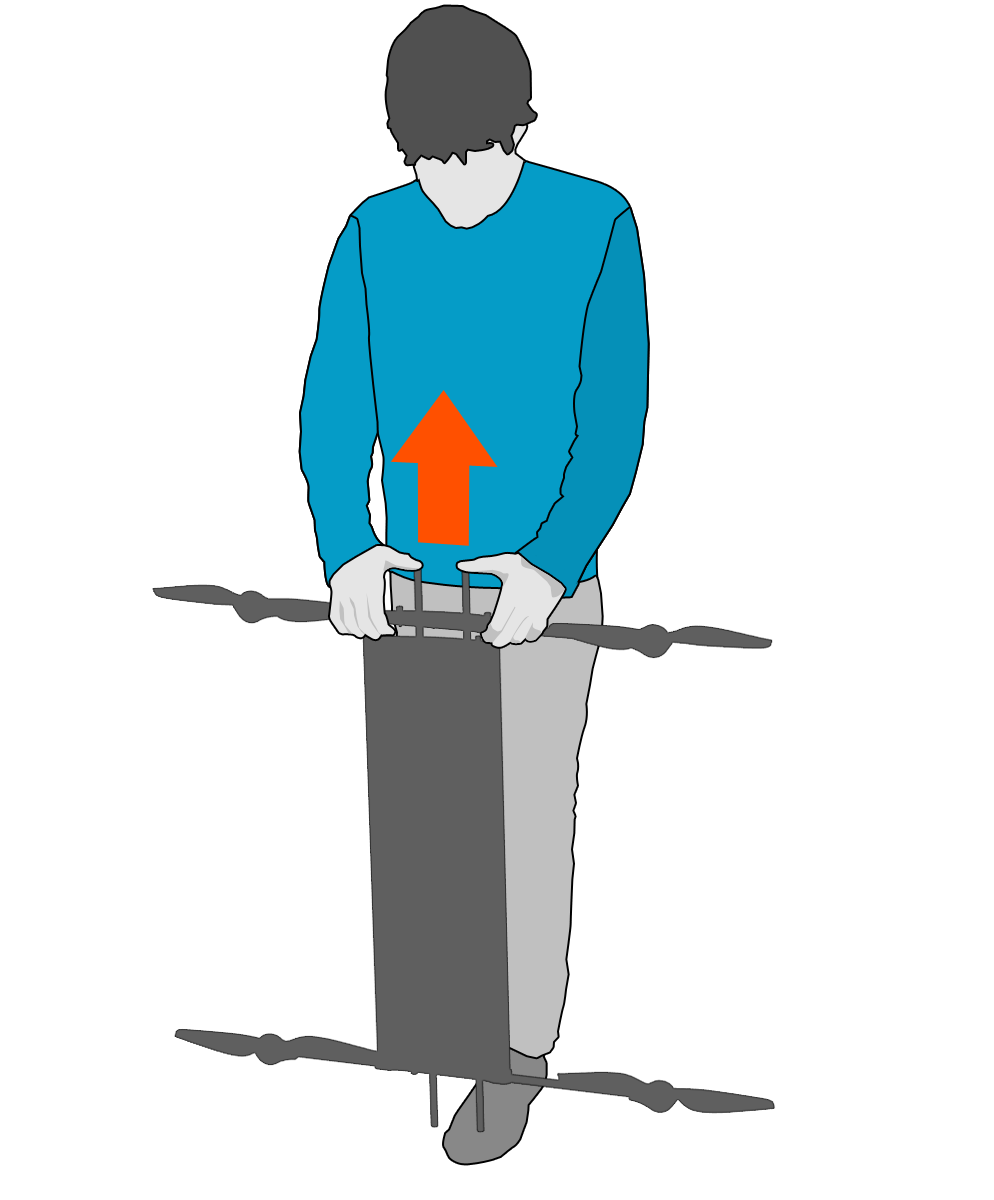Landing
Landing area - Clear
The landing area must be clear of obstacles and bystanders, including obstacles that are tall enough to interfere with the transition altitude, 30 m by default. Also ensure that everyone participating in the flight is aware that the aircraft will be approaching to land.
Landing - Start
Select the Land button ⇨ Start landing sequence from the Flight Modes section in Swift GCS.
The aircraft will now fly the landing pattern as described within the landing section of the preflight.
Typical landing accuracy is a 2 meter radius. All factors negatively affecting GPS reception can reduce your landing accuracy. Flying in gusty wind conditions may also degrade accuracy

Tip: The thrust generated by the VTOL propellers on takeoff and landing can kick-up dust and loose debris. Use a landing pad or similar to reduce the amount of dust when flying from dusty environments.
Once on the ground, the aircraft will continue to spin the motors at idle for a few seconds and then automatically disarm and disable the flight control surfaces.
If you change the flight mode to manual with the RC controller (or some other flight mode) after landing, but before the aircraft automatically disarms, then you will need manually disarm the aircraft from the GCS. The Disarm button is located on the Checklist Tab. Ensure that the GCS indicates that the vehicle is disarmed, and the aircrafts status LED is blinking before approaching the aircraft.
Your landing location should be located on flat ground. An angled landing surface can interfere will the aircraft’s ability to sense when a landing is complete and may result in a roll-over. If, for any reason, the VTOL propellers do not stop spinning after the normal disarm time, you may change the flight mode to manual with the RC controller. Doing so will stop the motors from spinning, but you will have to disarm the aircraft from the GCS.
Landing - Complete?
Wait for the aircraft to complete the planned landing sequence.
Aircraft - Disarm
The aircraft will automatically disarm once the aircraft has landed, or you can manually disarm it.
Do not disarm the aircraft while flying. This will result in a crash.
Mode - Manual
Move the mode switch on the RC controller to manual.

Wing - Remove
Unscrew the wing thumbscrews to remove the wing from the fuselage.
Payload - Shutdown
Perform any final steps with the payload as needed.
Aircraft - Shutdown
Shut the aircraft off by removing all batteries from the battery bay. Do not leave any batteries within the bay for storage.
Aircraft - Disassemble
Disassemble the aircraft.

Hold the center wing horizontally and flat against your stomach. Point the leading edge (front) of the wing down. Holding the center wing with one hand, and grasp the leading edge of a wing with your other hand. Gently rock the wing back and forth while pulling to disconnect each wing from the center section.

Place one end of the center wing against your shoe such that the wing is standing vertically. Loosen the 2x motor boom thumbscrews from the center wing. The thumbscrews do not need to be completely removed from the motor boom. They are held in place by the motor boom for convenience. Grab the motor boom with both hands and press against the spar joiners with your thumbs. Continue pressing to disconnect the motor connectors and slide the motor boom upward and off.